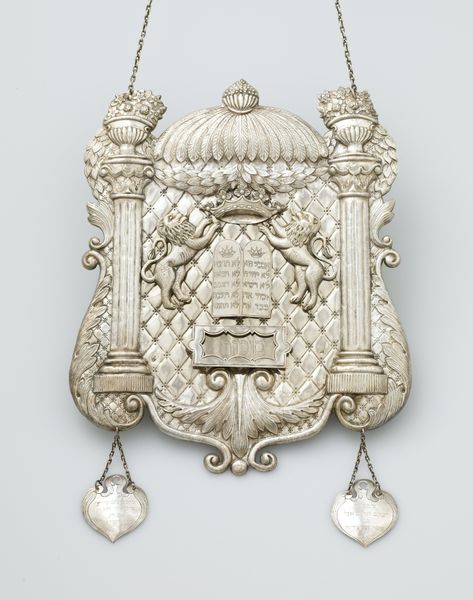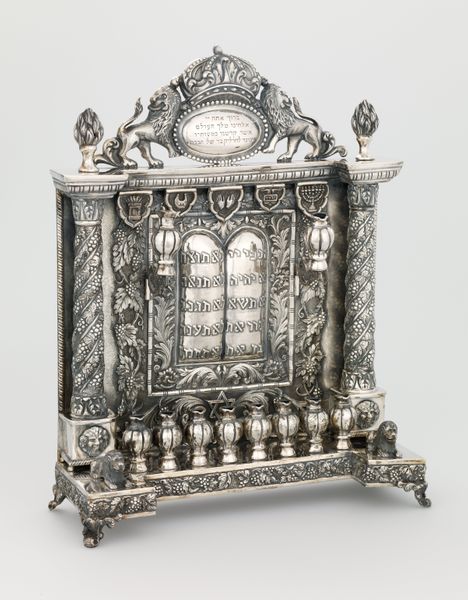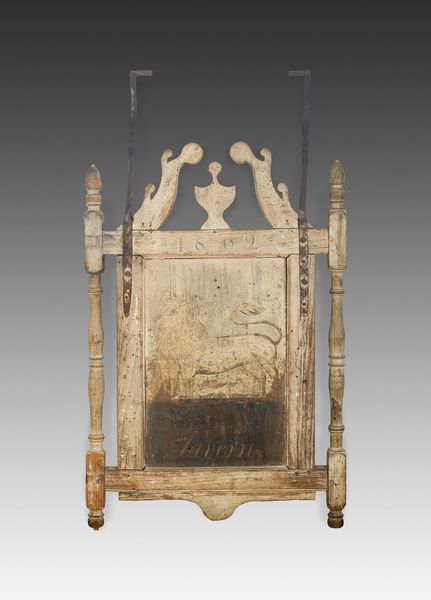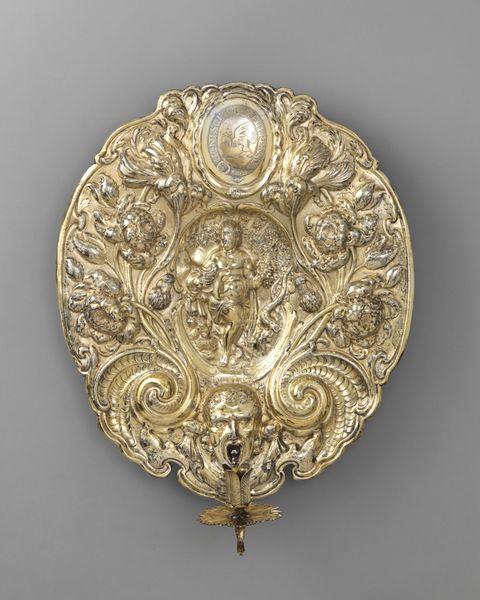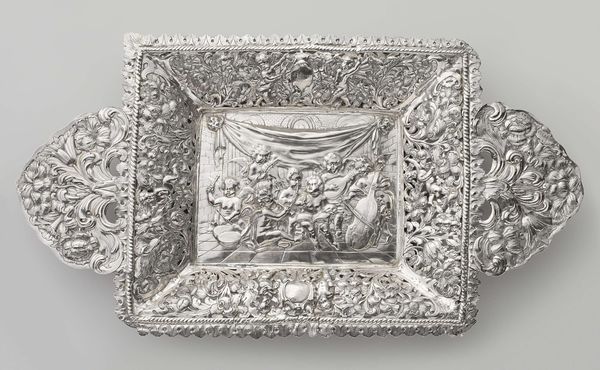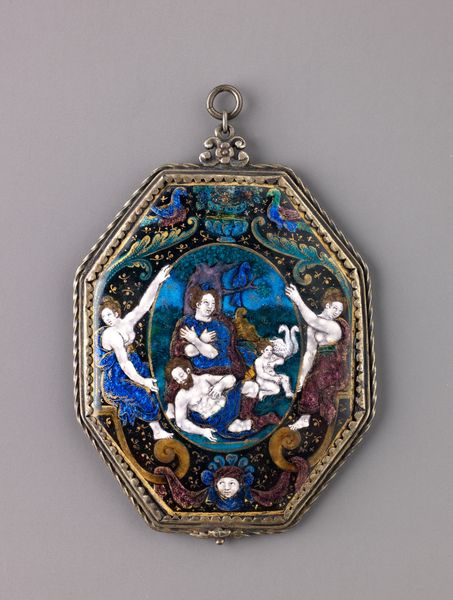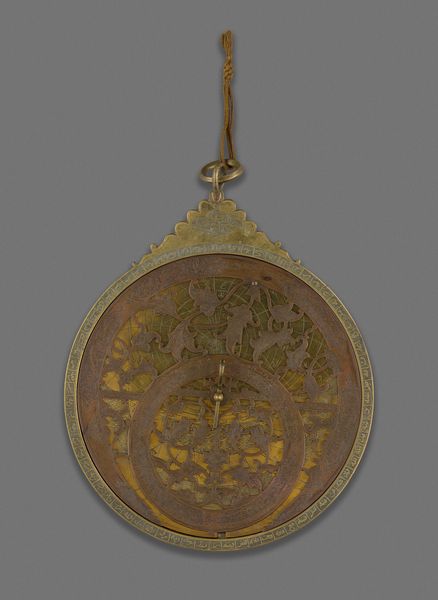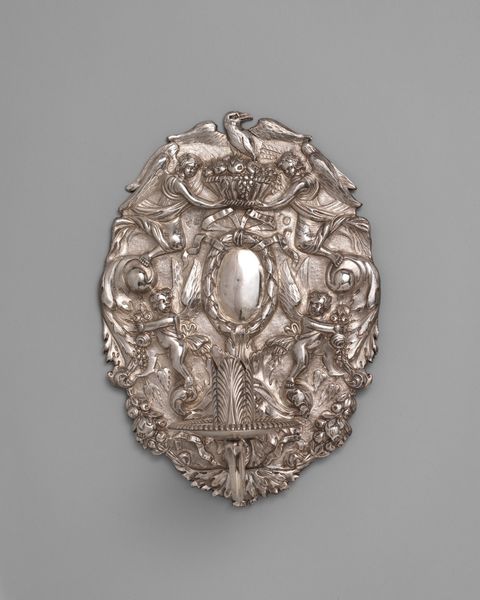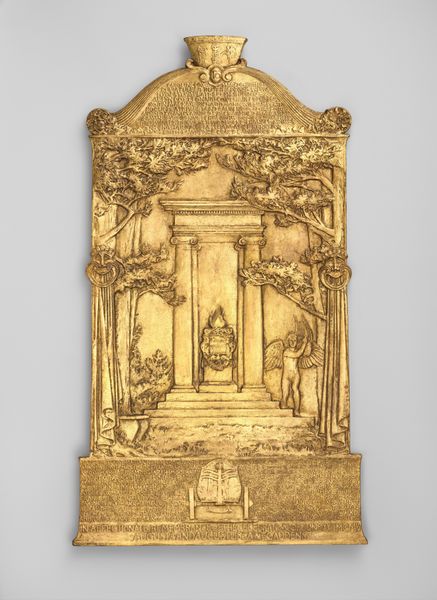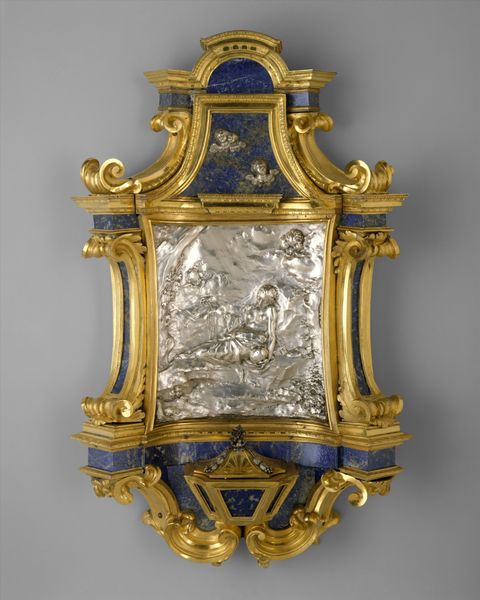
Dimensions: confirmed: 16 9/16 × 11 9/16 × 3 3/4 in. (42 × 29.4 × 9.5 cm)
Copyright: Public Domain
Curator: Up next, we have the Baraffael Family Hanukkah Lamp, created by Gaspare Vanneschi between 1773 and 1775. It's crafted from silver and is a superb example of decorative art from that era. Editor: Immediately, I'm struck by the light it reflects. It's more like a baroque sculpture than just a functional lamp. The intricate silver work is mesmerizing. Curator: Absolutely, and when thinking about objects like this, I am drawn to the socio-political factors at play. Who was the Baraffael family? What was their place within their community, and how does commissioning something so ornate speak to that status? How did gender influence how this artifact was employed or seen within the context of their home or community? Editor: Well, consider the material itself. Silver wasn't cheap, right? This lamp would have been a significant investment reflecting considerable resources of labor and the skill involved in its making, revealing both cultural traditions and a degree of wealth within the household. The detailed work, from the avian relief at the top to the symmetrical arrangement of candleholders, tells a story of skilled craftsmanship— likely from specialized artisans within a workshop setting. Curator: Yes, and I see the baroque elements--the elaborate details—as signaling an openness to assimilation into European artistic styles. This lamp could tell us something about cultural negotiation, about how Jewish families chose to express their identity. The question becomes how do we look beyond the artifact to consider not just assimilation, but appropriation, negotiation, and potentially resistance to imposed norms. Editor: Right, how materials intersect with broader market forces is really compelling. For example, did Vanneschi have local access to the silver, or was it imported from another location? The provenance of these materials informs our understanding of trade routes and supply chains back then. Curator: Examining art this way helps us reveal not just beauty or craftsmanship, but lived experiences and the politics of belonging. Editor: Precisely. It transforms the piece into more than just an object; it reveals historical economic relationships and artistic production that shaped even seemingly personal artifacts. Curator: It underscores how everyday objects like this are laden with social, economic, and historical meaning. Editor: Illuminating! And a reminder to examine closely what went into making and preserving this heritage.
Comments
No comments
Be the first to comment and join the conversation on the ultimate creative platform.
